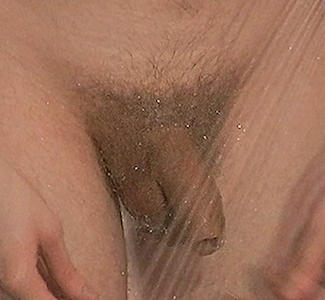People > M.H.
|
At the age of six or seven years I visited a swimming-school in our town. After the first lesson in the changing cubicle I was astonished and shocked too. I noticed the different between my penis and the other boys for the first time. The penis of all the other boys seemed to be longer, they were covered with skin. My penis seemed to be shorter, the skin was short too and looked red and swollen. Home again I told my mother about this discovery and asked for the reason. Now she told me: At the age of 15 months I had problems with my penis. The ray was thin and the foreskin was ballooning. My parents consulted a surgeon working in a hospital in our town. His diagnosis was called "phimosis"; a circumcision was his answer of the situation. He was not able or ready, to show alternatives. My parents believed him and I was cut free-hand in a brutal way. The foreskin at the back-side of the penis was cut by 100%; at the front-side I've lost 80% of the skin. I don't remember the operation. But I still know, it was an unpleasant feeling when later the penis was washed by soap - at the naked part of the glans and the small covered part too. Let's go back to day of the swimming-school: Since this discovery I was quiet carefully to show the circumcised penis, especially other boys after swimming. I was afraid, that they could laugh, because I was the only boy in my class, who was cut! Some years later my 3 years younger cousin visited me during the holidays. He told me, that he was circumcised too. He was operated by a rupture (editor: he underwent surgery for a hernia) and left the hospital without his foreskin. His penis looked like my penis, but he had lost more skin at the front-side and the frenulum by 100%. I was happy to know, that I wasn't the only boy without a foreskin. His problems were similar than my problems. He was afraid, that other people could see the penis, the boys in his class knew that he was cut and laughed about him. But the feeling - to be not intact - was still a strain. Later I told my girlfriend (today she's my wife ) about my phimosis and the operation. She accepted the circumstance. In the following years I've lost the sensitivity of the glans more and more. With the help of internet I've got a lot of informations about foreskin restoration. It was clearly, that I was not ready, to live circumcised till the end of my life. By eBay I ordered the Additional I use O-rings; especially after using the tugger. This changing methods are successful. Meanwhile 90% of my glans is covered with skin again. The penis looks like your own one in the part of your video "cleaning".
The sensitivity of the glans grows up, and I'm happy that I risked the restoration of the foreskin. Today I'm 46 years old; 43 years when I started the tugging, 41 years after an unnecessary operation. I'm sure that the process of restoration could be reducted, I had started tugging in my youth. When you ask me about the right method, I can't give you an answer. I think, every boy and man must look about his own personally method and must control the success of his doing. Quiet important is patience and patience. Today the foreskin has an other importance. The patents are critically. The surgeons cut the skin if other methods were without success. New methods of circumcision (for ex. the Plastibell) were used. |

